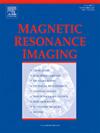噪声去相关线圈组合优化编辑1H MRS数据的信噪比
IF 2.1
4区 医学
Q2 RADIOLOGY, NUCLEAR MEDICINE & MEDICAL IMAGING
引用次数: 0
摘要
确定磁共振波谱(MRS)的最佳射频(RF)线圈组合方法对于最大化信噪比(SNR)和可靠地检测低浓度代谢物(如γ-氨基丁酸(GABA))至关重要。我们使用gaba编辑的1H MRS数据比较了几种先前提出的算法的性能。考虑到相控阵线圈经常表现出降低信噪比的噪声相关性,我们假设噪声去相关算法将是最有效的。我们研究了六种线圈组合方法,下半场考虑噪声相关性:1)等加权;2)信号加权;3) S/N2加权;4)去噪组合(nd-comb);白化奇异值分解(WSVD);6)广义最小二乘(GLS)。每种方法应用于119个gaba编辑的MEGA-PRESS数据集,这些数据集是在11个研究地点的3台GE和西门子MRI扫描仪上获得的。我们估计了GABA+和n -乙酰天冬氨酸(NAA)的信噪比,并检验了六种方法之间的统计学差异。我们还计算了GABA+/肌酸(Cr)比值的受试者间变异系数(cv)。结果两种方法测定GABA+和NAA的信噪比差异有统计学意义。与其他方法相比,噪声去相关方法产生更高的信噪比,与等加权方法相比,nd-comb、WSVD和GLS平均产生约37%的GABA+和34%的NAA信噪比。GLS对GABA+和NAA的信噪比均最高。当使用噪声去相关时,GABA+/Cr的cv值通常略小。结论正如预测的那样,噪声去相关线圈组合,特别是GLS,对gaba编辑的MRS数据产生了最佳的信噪比。本文章由计算机程序翻译,如有差异,请以英文原文为准。
Noise decorrelation coil combination optimizes SNR of edited 1H MRS data
Introduction
Determining the optimal radiofrequency (RF) coil combination method for magnetic resonance spectroscopy (MRS) is crucial for maximizing the signal-to-noise ratio (SNR) and reliably detecting low-concentration metabolites, such as γ-aminobutyric acid (GABA). We compared the performances of several previously proposed algorithms using GABA-edited 1H MRS data. Given that phased-array coils often exhibit noise correlations that reduce SNR, we hypothesized that noise decorrelation algorithms would be most effective.
Methods
We examined six coil combination methods, with the second half accounting for noise correlations: 1) equal weighting; 2) signal weighting; 3) S/N2 weighting; 4) noise-decorrelated combination (nd-comb); 5) whitened singular value decomposition (WSVD); and 6) generalized least squares (GLS). Each method was applied to 119 GABA-edited MEGA-PRESS datasets acquired on 3 T GE and Siemens MRI scanners across 11 research sites. We estimated the SNR of GABA+ and N-acetylaspartate (NAA) and tested for statistical differences between the six approaches. We also calculated the intersubject coefficients of variation (CVs) of GABA+/creatine (Cr) ratios.
Results
There were significant differences in the SNR of GABA+ and NAA between the methods. Noise decorrelation methods produced higher SNR compared to the other approaches, with nd-comb, WSVD, and GLS yielding, on average, approximately 37 % more GABA+ and 34 % more NAA SNR than equal weighting. GLS yielded the highest SNR for both GABA+ and NAA. The CVs for GABA+/Cr were generally somewhat smaller when using noise decorrelation.
Conclusion
As predicted, noise decorrelation coil combination, particularly GLS, produced optimal SNR for GABA-edited MRS data.
求助全文
通过发布文献求助,成功后即可免费获取论文全文。
去求助
来源期刊

Magnetic resonance imaging
医学-核医学
CiteScore
4.70
自引率
4.00%
发文量
194
审稿时长
83 days
期刊介绍:
Magnetic Resonance Imaging (MRI) is the first international multidisciplinary journal encompassing physical, life, and clinical science investigations as they relate to the development and use of magnetic resonance imaging. MRI is dedicated to both basic research, technological innovation and applications, providing a single forum for communication among radiologists, physicists, chemists, biochemists, biologists, engineers, internists, pathologists, physiologists, computer scientists, and mathematicians.
 求助内容:
求助内容: 应助结果提醒方式:
应助结果提醒方式:


